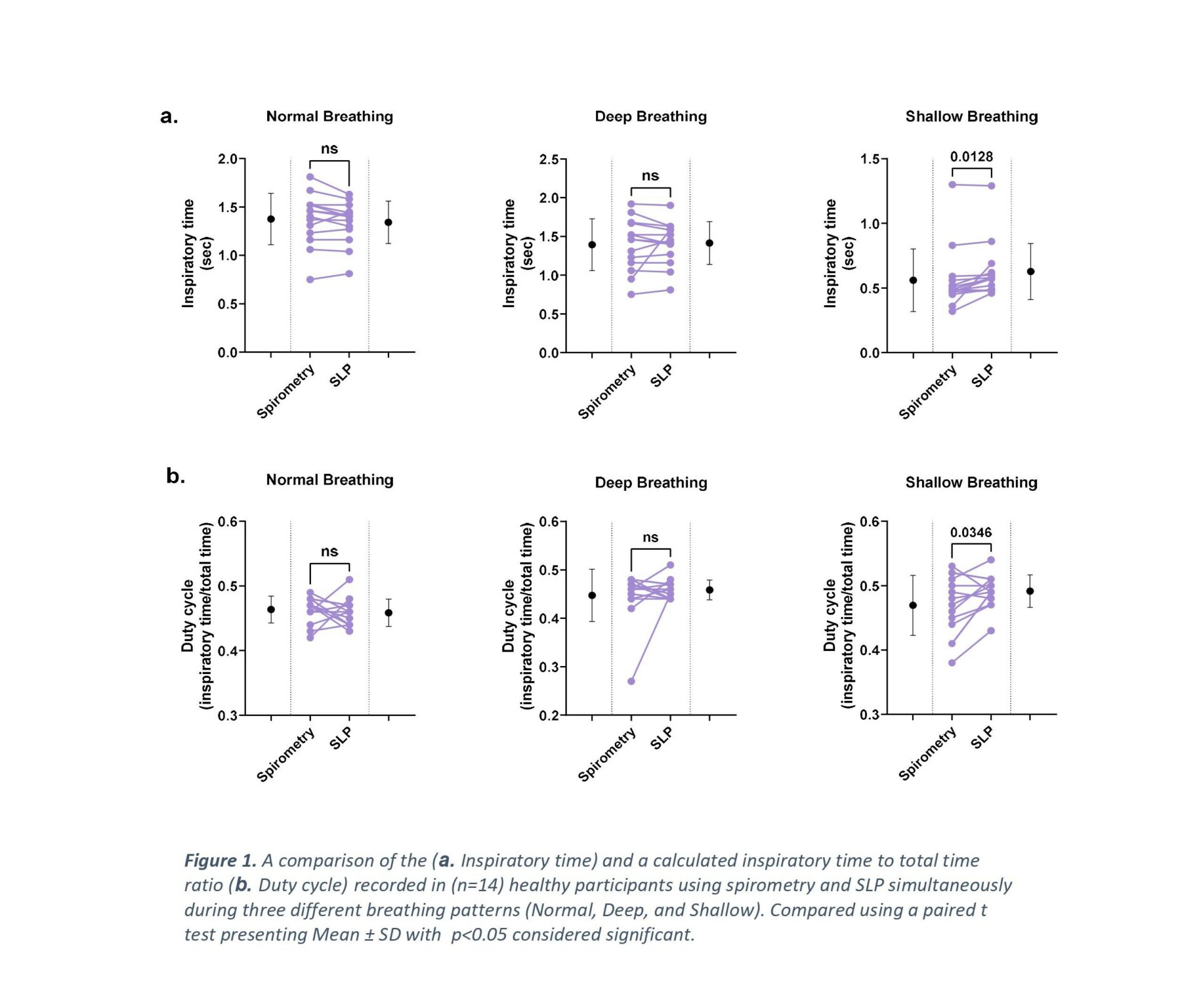Introduction: Structured Light Plethysmography (SLP) is a non-invasive, contactless, self-calibrating, easily portable technique that utilises a projected grid of white light and cameras to track, measure, capture Thoraco-Abdominal (TA) displacement and record quiet tidal breathing. Repeatability is the assessment of measurements from two devices for the same test subject when recorded simultaneously. Spirometry is considered the gold standard for measuring lung function but it requires the application of forceful manoeuvres and full cooperation and understanding that might not be attainable by patients. Thus, SLP could provide an opportunity to evaluate these subjects in addition to spirometry data. Aim: To determine the agreement and repeatability between SLP recordings and simultaneous spirometry measurements of tidal breathing. Methods: Quiet breathing in 14 healthy volunteers (18-35 years) was simultaneously recorded via SLP (Thora3Di, Pneumacare Ltd) and by spirometry (Power lab 4/20, AD Instruments Ltd). Statistical analysis using a paired t-test to evaluate the correlation and agreement of these techniques was assessed under three different breathing conditions: Normal, Deep and Shallow for a total of 3 minutes and a minute for each pattern. Respiratory rate (RR), inspired, expired and total breathing times were analysed (Ti, Te, Ttot), and duty cycle (Ti/Ttot) were calculated under the three different breathing conditions. All the work carried in this study was under the ethical review licence (ERN_19-0016) approved by the Science, Technology, Engineering and Mathematics Ethical Review Committee at the University of Birmingham with a screening questionnaire and a written, signed consent form completed by participants. Results: There was a significant difference in shallow breathing measurements found in inspiratory time and duty cycle (Ti P=0.0128, Ti/Ttot P=0.0346) with no significant changes during normal and deep breathing (see Figure 1. a-b). Conclusions: SLP shows a good correlation with spirometry for all timing indices under normal and deep breathing, indicating that it is a reliable technique under these conditions. However, a significant difference in shallow breathing was observed, suggesting either that body movement during rapid breathing disturbed SLP detection of breathing as a result of the high frequency or that this pattern of breathing affected spirometry through an increased dead space ventilation and resistance. It is safe to say that SLP can be a useful method in the detection of breathing and useful addition to other techniques with attention to changes in breathing patterns.
Physiology 2021 (2021) Proc Physiol Soc 48, PC012
Poster Communications: Assessment of Repeatability using Structured Light Plethysmography Technique Compared to Spirometry
Eyas A. Alhuthail1, 2, Brendan G. Cooper1, 3, James A. Stockley3, Andrew M. Coney1
1 Institute of Clinical Sciences, College of Medical and Dental Sciences, University of Birmingham, Birmingham, United Kingdom 2 Basic Sciences Department, College of Sciences and Health Professions, King Saud bin Abdulaziz University for Health Sciences, Riyadh, Saudi Arabia 3 Lung Function and Sleep, University Hospitals Birmingham NHS Foundation Trust, Birmingham, United Kingdom
View other abstracts by:
Where applicable, experiments conform with Society ethical requirements.

